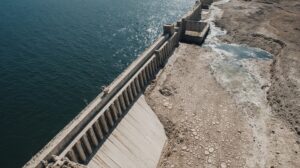The recent resolution of the President of Uzbekistan on measures to develop a network of microhydroelectric power plants (microhydroelectric power plants) opens the way to the construction of almost three thousand small hydroelectric power plants with a total capacity of 164 MW in the next two years. However, these large-scale plans, presented as a step towards providing the population with electricity and creating jobs, raise serious concerns among environmentalists. There is a real threat that the pursuit of «green» energy will result in irreversible damage to the country’s unique aquatic ecosystems, and environmental risks are underestimated or ignored.

At first glance, the intention to place most of the planned micro-hydroelectric power plants on existing artificial canals seems less destructive for nature than construction on natural rivers. But the hydrological situation in Uzbekistan is extremely specific and requires special attention. Over decades of intensive development of water resources for irrigation and hydropower, the country’s natural river systems have undergone catastrophic changes. Paradoxically, many artificial canals have become refugia refugia for rare and endemic fish species displaced from their original river habitats. An example is the endemic species Dzihunia pseudoamudarjensis – this char, described in 2024, was found only in the South Fergana Canal.
Of particular concern is the fact that about a hundred planned microhydroelectric power stations are expected to be built on sections of natural rivers, without any assessment of the impact on their biota and ecosystem functions. Many of these river ecosystems – invaluable islands of wildlife where unique populations of rare and vulnerable species have been preserved, including endemic fish, ideally adapted to the conditions of these particular watercourses. Further fragmentation by dams will lead to their complete degradation.
International coordinator of the environmental coalition «Rivers Without Borders» Evgeny Simonov notes that Uzbekistan’s desire to develop renewable energy in itself is understandable and commendable. However, it cautions that this goal should not be achieved at the cost of destroying unique biodiversity, especially in water-scarce environments. Simonov points out that most river ecosystems on the plains have already been seriously damaged by irrigation in the last century. Now, he said, all remaining rivers are at risk of fragmentation due to the massive construction of hydroelectric power stations, which will bring only a modest increase in power. He emphasizes that the new plan involves not only the construction of more than a hundred dams on natural rivers, but also thousands of microhydroelectric power plants on artificial canals, which could also destroy the habitats of rare and endemic fish species that have found their last refuge there.
For example, last year, to create three mini-hydroelectric power stations, the Ugam River – a unique mountain watercourse in which at least four rare endemic fish species lived, including the Chatkal sculpin, was dug up and dammed. Now the prospect of survival of these species in Ugama is in question, and any migrations are blocked by the dam.
The construction of even small hydraulic structures on natural rivers and critical sections of canals will inevitably lead to fragmentation of waterways, disruption of the natural hydrological regime and degradation of habitats. The consequences could be catastrophic, up to the complete disappearance of unique populations of fish and other aquatic organisms, which would be an irreparable loss for the biodiversity of not only Uzbekistan, but the entire region.
Ramil Akhmetov («Ekozor»)




